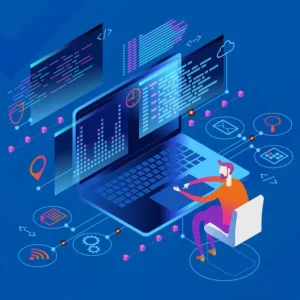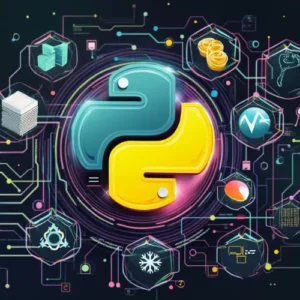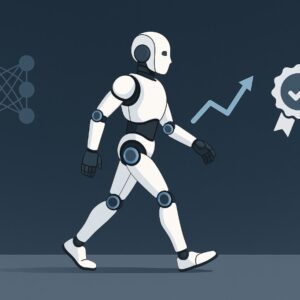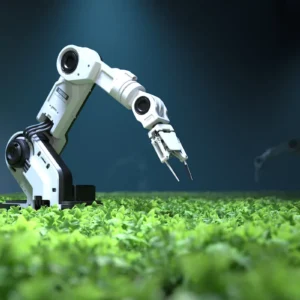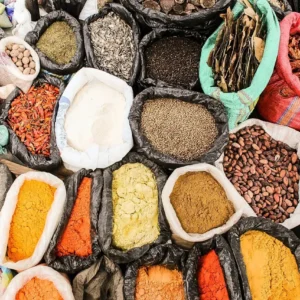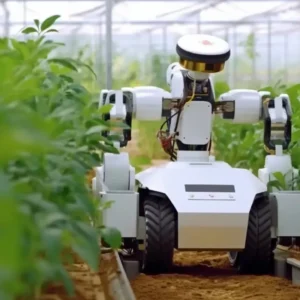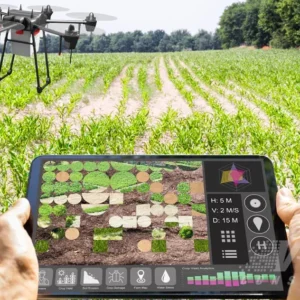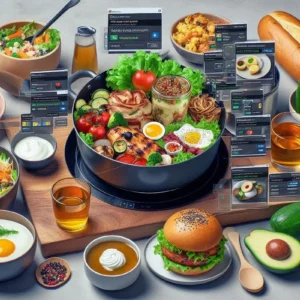Machine Learning in Food is an innovative approach, transforming the entire culinary landscape with its algorithmic magic. This cutting-edge technology is not just a trend but a powerful tool, offering an exciting new dimension to the food industry. From optimizing production processes to creating personalized culinary experiences, ML is the game-changer everyone has been waiting for.
Food companies are embracing algorithms to revolutionize their operations, moving away from manual, time-consuming guesswork. With ML, they can harness predictive intelligence, making informed decisions with accuracy and efficiency. This shift marks a new era of culinary innovation, where technology and taste intertwine seamlessly. By leveraging AI-driven insights, businesses can refine their product development, optimize supply chains, and personalize customer experiences, ensuring a seamless fusion of technology and gastronomy.
Revolutionizing Food Supply Chains with Machine Learning
Machine learning algorithms are revolutionizing the food industry, especially in supply chain management. These innovative tools predict demand patterns, helping businesses avoid overproduction and minimize waste. By analyzing historical sales data, machine learning models accurately forecast demand trends, allowing companies to optimize their procurement and inventory management.
This technology ensures that food supply chains are efficient, sustainable, and responsive to market demands, thereby enhancing overall productivity and reducing costs. Machine learning in food supply chains is a game-changer, offering a brighter and more prosperous future for the industry.
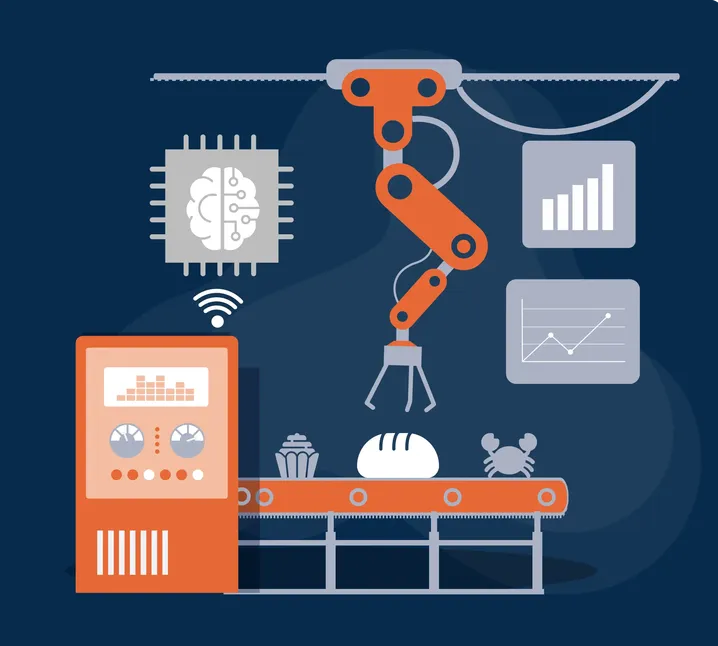
Transforming Food Quality: ML’s Unmatched Potential
Machine Learning (ML) in the food industry is a Holy Grail, offering unprecedented opportunities for innovation. It enables a comprehensive evaluation of ingredient quality and supplier reliability, ensuring only the best reaches consumers. By utilizing computer vision, ML can accurately classify produce freshness, ensuring that ingredients meet the highest standards.
Furthermore, ML-powered decision support systems can assess supplier risk, guaranteeing a reliable supply chain. With its ability to process vast datasets, ML is an invaluable tool for optimizing food quality and safety. This technology is revolutionizing the industry, ensuring that every meal is a delicious and safe experience.
Suppercharging Nutrition: Machine Learning’s Impact on Food
Machine Learning in Food has revolutionized the way we approach personalized nutrition. This innovative technology empowers individuals to receive tailored meal recommendations, taking into account their unique health needs and preferences. By analyzing extensive health records and taste profiles, Machine Learning algorithms generate diet plans that are not only nutritious but also delectable.
These recipes evolve and adapt over time, incorporating user feedback to ensure a delightful culinary experience. With Machine Learning, we can unlock the potential for a healthier and more enjoyable relationship with food.
Optimizing Food Safety: A Smart Approach
In the realm of food safety, machine learning emerges as a potent tool, offering unprecedented precision and efficiency. By employing anomaly detection and real-time alerts, this technology ensures prompt identification of potential contamination or safety hazards. Imagine a world where AI-powered systems predict microbial risks on manufacturing lines, significantly reducing the chances of foodborne illnesses.
With smart sensors and machine learning algorithms, variations in temperature and humidity can be swiftly detected, preventing spoilage and maintaining the highest quality standards. This innovative approach not only safeguards public health but also revolutionizes the food industry, ensuring a safer and more reliable supply chain.
Unlocking the Power of Machine Learning for a Sustainable Food Future
In the quest for a more sustainable food system, Machine Learning in Food plays a pivotal role. By employing predictive analytics, we can revolutionize how we manage food resources. These advanced models can accurately predict surpluses and expiration dates, offering a powerful tool to combat food waste.
The beauty of this technology lies in its ability to analyze inventory trends, identifying patterns that lead to excess or spoilage. With this knowledge, we can implement proactive measures, such as creative meal planning, to repurpose leftovers and ensure nothing goes to waste. By harnessing the potential of Machine Learning, we can create a more efficient and environmentally conscious food industry.
Empowering Food Inspection with AI: A Tasty Journey
In the world of food production, Machine Learning in Food has emerged as a powerful tool, revolutionizing the way we inspect and ensure the quality of our favorite treats. With computer vision and ML technologies, we can now automate and enhance the inspection process, bringing efficiency and accuracy to a whole new level.
These innovative systems employ deep learning models to detect and identify anomalies in produce, such as shape, color, and texture inconsistencies. By training these models on vast datasets, they can swiftly identify any deviations from the norm, ensuring that only the finest quality products make it to our tables.
This technology not only saves time and resources but also guarantees a consistently high standard of food quality, providing a delightful experience for consumers.
Dynamic Food Pricing Approach with Intelligent Algorithms
Machine Learning in Food retail has become an innovative approach to revolutionize pricing strategies. By leveraging the power of ML, retailers can now dynamically adjust their prices in real-time, taking into account a multitude of factors. This advanced technology enables businesses to analyze external and internal data, such as competitor pricing and seasonal trends, with remarkable precision.
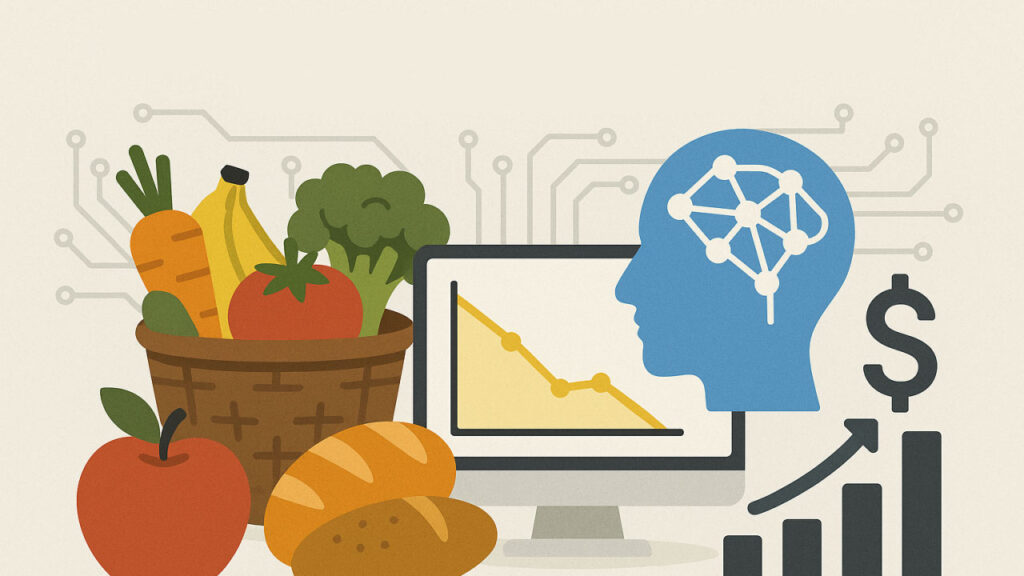
With this cutting-edge tool, retailers can ensure their prices remain competitive, maximizing profitability while also offering customers the best value. The implementation of Machine Learning in food retail pricing optimization is a game-changer, providing an intelligent and efficient solution to a complex challenge.
Unlocking Culinary Creativity with Machine Learning
The integration of Machine Learning in Food is revolutionizing the culinary world. With its innovative algorithms, ML explores endless possibilities, combining ingredients and flavors in unique ways. It acts as a creative assistant, generating new recipe ideas and product concepts. By analyzing ingredient databases and consumer preferences, this AI technology invents dishes that cater to diverse palates.
Before physical trials, virtual recipe testing ensures efficiency and reduces waste. This approach not only saves time and resources but also encourages experimentation. Thus, ML empowers chefs and food enthusiasts to explore their creativity, pushing the boundaries of cuisine. This cutting-edge application of technology in the culinary arts opens up exciting avenues for innovation.
Beverage Creation: A Sweet, Sour, and Bitter Adventure
The integration of Machine Learning in Food, particularly in beverage development, is an innovative approach. This technology allows for the precise creation of balanced and appealing drinks. By understanding consumer preferences through data analysis, beverage designers can craft soft drinks that perfectly align with the desired taste profiles.
With sofisticated algorithms, one can adjust the bitterness, acidity, and sweetness levels, ensuring an optimal flavor experience. This process enhances the overall beverage-making journey, offering a unique and tailored approach to satisfy consumers’ palates. The use of ML in flavor profiling is a game-changer, providing an exciting path for beverage innovation.
Revolutionizing the Culinary World: A Taste of Innovation
Machine Learning in Food has brought a revolutionary twist to the culinary arts, transforming the way we cook and experience cuisine. With connected kitchens, precise data is collected, allowing for the optimization of cooking times and techniques. These intelligent systems learn and adapt to individual preferences, ensuring each dish is prepared to perfection.
The introduction of smart ovens, driven by ML algorithms, offers a personalized cooking experience. These ovens adjust temperatures and timing, catering to your unique tastes. It’s an innovative approach, providing a whole new level of convenience and precision in the kitchen. Imagine a world where complex dishes are made simple with ML-driven instructions, guiding you every step of the way!
True Food Industry Insights: Machine Learning’s Impact
Machine Learning in Food has transformed the way we understand consumer preferences and market trends. By employing Natural Language Processing techniques, businesses can now decipher customer sentiment with precision. This innovative approach goes beyond traditional data analysis, as it delves into the emotional aspects of feedback, extracting valuable insights from text reviews.
With this advanced technology, companies can identify satisfaction levels and detect early market shifts, allowing for prompt adjustments and strategic decisions. It’s an invaluable tool for food branding, ensuring products and services remain aligned with customer desires. This cutting-edge technology is transforming the food industry, offering a competitive edge and enhanced consumer satisfaction.
ML and Blockchain in Food
Machine learning and blockchain are revolutionizing the food industry by enhancing transparency, efficiency, and personalization. Machine learning helps optimize food production, predict demand, and personalize nutrition based on consumer preferences.
Meanwhile, blockchain ensures secure and immutable records for tracking food provenance, reducing fraud, and improving supply chain trust. Together, these technologies create a smarter, more reliable food ecosystem, ensuring quality, safety, and sustainability from farm to table.
Conclusion
Machine Learning in Food is a powerful tool that brings unprecedented transparency to the entire food supply chain. With ML, every step of the food’s journey, from the farm to the consumer’s table, can be meticulously tracked and monitored. This level of traceability not only ensures accountability but also fosters trust among all stakeholders.
By combining blockchain technology with Machine Learning, ingredient-level traceability becomes a reality. This innovative approach allows for the precise identification and tracking of individual ingredients, providing an unprecedented level of detail and accuracy.
Additionally, ML algorithms can predict potential bottlenecks and delivery delays, enabling proactive measures to be taken and ensuring a seamless flow of goods.

